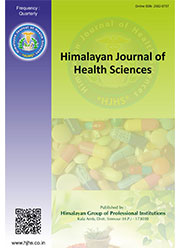Meningitis
Abstract
The term aseptic meningitis encompasses all types of inflammations of the brain meninges other than that caused by pus producing organisms. It is usually a mild illness. Etiology of aseptic meningitis is very wide and includes many infections - both viral and non viral, drugs, malignancy and systemic illness. The most common cause is viral infection and enteroviruses - Coxsackie and ECHO viruses account for more than half of all cases. Clinical manifestations include headache, fever, malaise, photophobia and meningeal signs. Convulsions, neurological deficits and severe obtundation are rare except with certain non viral infectious meningitis. Diagnostic work up includes blood and cerebrospinal fluid (CSF) examination and serology for infectious meningitis. The polymerase chain reaction is a rapid and accurate method for detection of microbial DNA in CSF. Treatment is mainly supportive, except for the nonviral infectious etiology.
References
2. Hammer SM, Connolly KJ. Viral aseptic meningitis in the United States: Clinical features, viral etiologies and differential diagnosis. Curr Clin Top Infect Dis. 1992;12:1-25
3. Tee WS, Choong CT, Lui RV, Ling AE. Aseptic meningitis in children: The Singapore experience. Ann Acad Med Singapore. 2002:31(6);756-760
4. Middlekamp JN. Aseptic meningitis & viral meningitis. In Feigin, Cherry, eds. Textbook of Pediatric Infectious Diseases. Feigin & Cherry WB Saunders Co; 1981.p.319-324.
5. Prober CG. Infections of the Central Nervous System. Bergman, Kleigman & Jenson, eds. Nelson Textbook of Pediatrics; 16th edn. WB Saunders Co; 2000.p.13-716.
6. Rotbart HP. Enteroviral infections of the central nervous system. Clin Infect Dis. 1995; 20(4);971-981.
7. Shukla PC, Ramachandran T. Aseptic Meningitis. Emedicine Article. 23rd May 2002
8. Connolly KJ, Hammer SM. The acute aseptic meningitis syndrome. Infect Dis Clin North Am. 1990;4(4);599-622
9. Dalton M, Newton RW. Aseptic meningitis. Dev Med Child Neurol. 1991;33(5);446-451.
10. Muir P, van Loon AM. Enterovirus infections of the central nervous system. Intervirology. 1997;40(2):153-166.
11. Gabudza DH. Neurological disorders associated with HIV infections. J Am Acad Dermatol. 1990;22(6 pt 2):1232-1236.
12. Newton HB. Common neurologic complications of HIV -1 infection and AIDS. Am Fam Physician. 1995;51(2):387-398.
13. Kumar R, Singh SN, Kohli N. A diagnostic rule for tuberculous meningitis. Arch Dis Child. 1999;81:221-224.
14. Tuerlinckx D, Bodart E, Garrino MG, de Bilderling G. Clinical data and cerebrospinal fluid findings in Lyme meningitis versus aseptic meningitis. Eur J Pediatr. 2003;162(3):150-153.
15. Moris G, Garcia-Monocot JC. The challenge of drug induced aseptic meningitis. Arch Intern Med. 1999;159 (11):1185-1194.
16. Marinac JS. Drug and chemical induced aseptic meningitis: a review of the literature. Ann Pharmacother. 1992;26(6):813-822.
17. Shapiro WR, Young DF. Neurological complications of antineoplastic therapy. Acta Neurol Scand Suppl. 1984; 100:125-132.
18. Kennedy C. Acute viral encephalitis in childhood. BMJ. 1995;310:139-140.
19. Roos KL. Pearls and pitfalls in the diagnosis and management of central nervous system infectious diseases. Semin Neurol. 1998;18(2):185-196
20. Kumar R, Kohli N, Thavnani H, Kumar A, Sharma B. Value of CT scan in the diagnosis of meningitis. Indian Pediatr. 1996;33:465-468.
21. Holub M, Beran O, Dzupova O, et al. (2007). "Cortisol levels in cerebrospinal fluid correlate with severity and bacterial origin of meningitis". Critical Care 11: R41. DOI:10.1186/cc5729
22. Beckham J, Tyler K. "Initial Management of Acute Bacterial Meningitis in Adults: Summary of IDSA Guidelines". Rev Neurol Dis. 2006;3 (2):57-60. PMID 16819421
23. Durand, L. et al. Acute Bacterial Meningitis. Mandell Infectious Diseases. NEJM. 328(1, 1/7/93): 22-28
24. Quagliarello, V. and Scheld, M., Bacterial Meningitis: Pathogenesis, Pathophysiology, and Progress, NEJM. 327(12, 9/17/92):864-872
25. Ahmed A: Pediatr Infect Dis J. 1997 Sep; 16(9):895-903.
26. Ahmed A, Hickey SM, Ehrett S, et al: Cerebrospinal fluid values in the term neonate. Pediatr Infect Dis J. 1996 Apr;15(4):298-303
27. Balagtas RC, Levin S, Nelson KE: Secondary and prolonged fevers in bacterial meningitis. J Pediatr. 1970 Dec;77(6):957-64
28. Bilukha OO, Rosenstein N: Prevention and control of meningococcal disease. Recommendations of the Advisory Committee on Immunization Practices (ACIP). MMWR Recomm Rep. 2005 May 27;54(RR-7):1-21.
29. Bridy-Pappas AE, Margolis MB, Center KJ, Isaacman DJ: Streptococcus pneumoniae: description of the pathogen, disease epidemiology, treatment, and prevention. Pharmacotherapy. 2005 Sep;25(9): 1193-212.
30. CDC: Direct and indirect effects of routine vaccination of children with 7-valent pneumococcal conjugate vaccine on incidence of invasive pneumococcal disease--United States, 1998-2003. MMWR Morb Mortal Wkly Rep. 2005 Sep 16;54(36):893-7
31. Chavez-Bueno S, McCracken GH: Bacterial meningitis in children. Pediatr Clin North Am. 2005 Jun; 52(3):795-810.
32. Erickson L, DeWals P: Complications and sequelae of meningococcal disease in Quebec, Canada, 1990-1994. Clin Inf Dis. 1998;26:1159-1164.
33. Franco SM, Cornelius VE, Andrews BF: Long-term outcome of neonatal meningitis. Am J Dis Child. 1992May; 146(5):567-71

This work is licensed under a Creative Commons Attribution-NonCommercial 4.0 International License.
The International Journal of Innovative Science & Technology affairs require a formal written transfer of copyright from the author(s) for each article published. We therefore ask you to complete and return this form, retaining a copy for your records. Your cooperation is essential and appreciated. Any delay will result in a delay in publication.
I/we have read and agree with the terms and conditions stated Page 2 of this agreement and I/we hereby confirm the transfer of all copyrights in and relating to the above-named manuscript, in all forms and media, now or hereafter known, to the International Journal of Drug Regulatory affairs, effective from the date stated below. I/we acknowledge that the IJDRA is relying on this agreement in publishing the above-named manuscript. However, this agreement will be null and void if the manuscript is not published in the IJIST.
Download link for COPYRIGHT FORM





